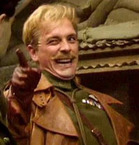Dazo
Posts: 102
Joined: 9/28/2018
Status: offline

|
quote:
ORIGINAL: Chernobyl
The other long term problem for the Centrals is diplomacy. Specifically the Netherlands will deal NM damage every turn to Germany if she is anything but Central-aligned. And the reality is that the Entente get an insane number of diplo chits with no restrictions and the Centrals simply can't match this. Not sure why they give the Entente 18 diplomatic chits (UK France Italy Russia) while the Centrals only get 12, but basically there's no way to stop the Netherlands from swinging. And again it isn't really even the large MPP loss (65 seems too large, should be like 35 and just give Germany a couple extra cities to make up for the difference) that is the main problem but it's the NM damage every turn that hurts the most. I'm not quite sure what historical events the developers are intending here because there already is blockade which deals NM damage every turn. Was the Netherlands really a giant supplier of calories for Germany? Did millions of tons of grain come through the blockade and sneak into Germany to the Netherlands during WWI? There's also a NM hit to Germany once Norway swings but the Netherlands is the main way to hurt the central powers using diplomatic chits. I think the France Russia and Italy should lose some diplo chits (come on was Italy really able to influence anyone at all during the war?) and probably Russia and Ottomans shouldn't be able to influence far away countries like Netherlands... or Spain.
Actually, I think the cost of Holland swinging towards Entente is pretty ok.
However that's an interesting topic so I'll go a bit deeper.
Long story made short, Netherlands economy was more or less integrated with the Ruhr/Germany one before the war:
"From the 1860s, when both countries became free traders, the Dutch economy became extremely open, with an export quote (exports divided by GDP) of over 0.5. In 1862 and 1875, 23 percent of these exports went to Germany; 47 percent in 1910. [...] exports to Germany increased from 10 percent of the GDP in 1862 and 14 percent in 1875 to 30 percent in 1910. [...] In 1912, when the trade ratio (total trade divided by GDP) peaked at 1.4, 0.6 was trade with Germany..."
For more details, you have to consider the four categories of merchandise exported to Germany (wether officialy or not):
1) raw products imports from overseas (transit)
2) raw products imports from Holland proper
3) manufactured products from overseas (transit)
4) manufactured products from Holland proper
"A substantial part of Dutch economic activity was adding value to imports that were exported again."
"Another headache for the Allies was the redirection of trade patterns by the neutrals adjacent to Germany, who sold their own produce to Germany and imported food from overseas instead. In the first half of 1916 5 million gold marks’ worth of food arrived daily from the Netherlands, which made up the gap with imported food."
(5 million GM daily = 1,825 billion GM for 1916 or 21,73% of all german imports valued at 8,4 billion GM)
You can consider those 65 MPPs a land convoy that can't be raided but exists from the start.
As for the relative importance (including NM) compared to Sweden or Norway it's because of several factors but mainly because most of the food came from Holland. Germany could do without swedish ore but not without food from Netherlands:
"The distortions of the war economy were not restricted to food. Two of the most important industrial products, iron and coal, were seriously affected. Iron production depends on the availability primarily of iron ore, coal, and limestone, all of which Germany had in abundance; another production factor, scrap iron, grew in importance, and also in availability."
"A group of food supply experts appointed at the outbreak of war, the Eltzbacher commission, concluded in December 1914 that Germany imported 20 percent of its food by calorific value, 20 percent of its animal protein, and 42 percent of fats. [...] On average, in 1912 and 1913, Germany’s consumption of animal and vegetable fats and oils amounted to 1,860,000 tons, but its domestic production accounted for only 1,105,000 tons. In particular, 97 percent of vegetable fats and oils were imported over this period. [...] "In 1917”, one historian has written, “the Germans procured 5,181 tons of fats from imports through the blockade. During the first ten months of 1918, this figure was only 1,928 tons.”
As for the lower NM hit for Norway, Sweden & co, it's also because german imports were just rerouted through neutrals without actually increasing:
"US exports to Sweden showed a sudden, enormous expansion, at the same time as US trade with Germany dropped. There were significant increases in exports to Denmark, Norway, and Holland. The decrease in exports from New York to Germany, from 90.7 million dollars from August 1913 to September 1914 to 5.8 million dollars over the same period in 1914-1915 was almost exactly matched by the increase in exports to Denmark, Norway, and Sweden from 20 million to 104 million dollars."
Source1
Source2
quote:
ORIGINAL: ThisEndUp
The Netherlands was essential to Germany for access to the world market. They were a loophold in the blockade system until the Entents closed it later in the war, reflected by the alignment slip I suppose. They did experience their own food shortages, but that was much later on when the blockade policy went into its furthest extent. 50 NM per turn isn't that large anyway. Just let Germany occupy Serbia instead or soemthing.
I tend to agree with ThisEndUp.
The diplo chit thing is another story entirely though I also consider it pretty ok as Germany has the option to invest heavily in Holland from the start with a good chance to increase a bit its starting lead.
If Entente go all in on Holland later, they won't be able to invest anywhere else if they want results because even with 6 more chits, it "only" means 30% chance per turn to hit whiwh can take some time to bring results.
Also remember that diplo chits arn't an open book, you can kno how many MPPs are invested but not how many chits went where.
Plus there are some other possibilities:
- Germany can just let you spend on Holland and then invade to recoup some of its losses.
- CP can wait for you to switch your diplo efforts somewhere else to try to reswing Holland.
- CP can also leave Holland alone and use this chance to target another country like Switzerland, Romania or whatever.
- CP can concentrate on one country like Italy to try to take it out (including its diplo chits).
- Germany can try to manage its conquests (mostly Russia) to milk the most possible NM out of it.
- Germany can go for UNW to lift blockade or target other NM objectives.
- Maybe some other things I couldn't think about...
Overall the Holland swing just makes that clock ticking louder for CPs, they have to win the war faster or else... 
SCWWI is pretty good at giving you scares with huge crisis but also giving you some options to answer them as long as you don't pile up mistakes from the start.
< Message edited by Dazo -- 2/5/2021 11:43:58 PM >
|
 Printable Version
Printable Version












 .
.  New Messages
New Messages No New Messages
No New Messages Hot Topic w/ New Messages
Hot Topic w/ New Messages Hot Topic w/o New Messages
Hot Topic w/o New Messages Locked w/ New Messages
Locked w/ New Messages Locked w/o New Messages
Locked w/o New Messages Post New Thread
Post New Thread